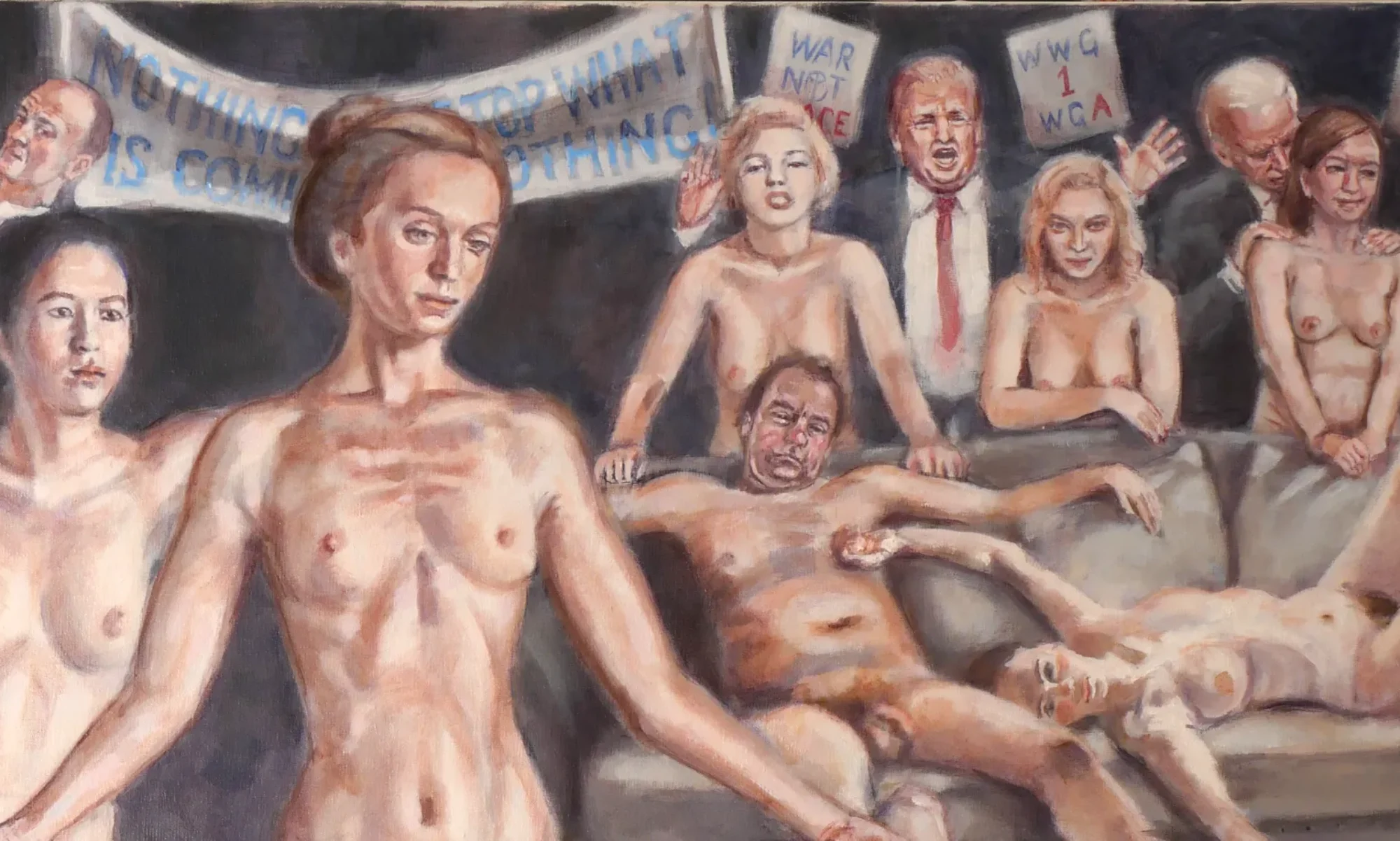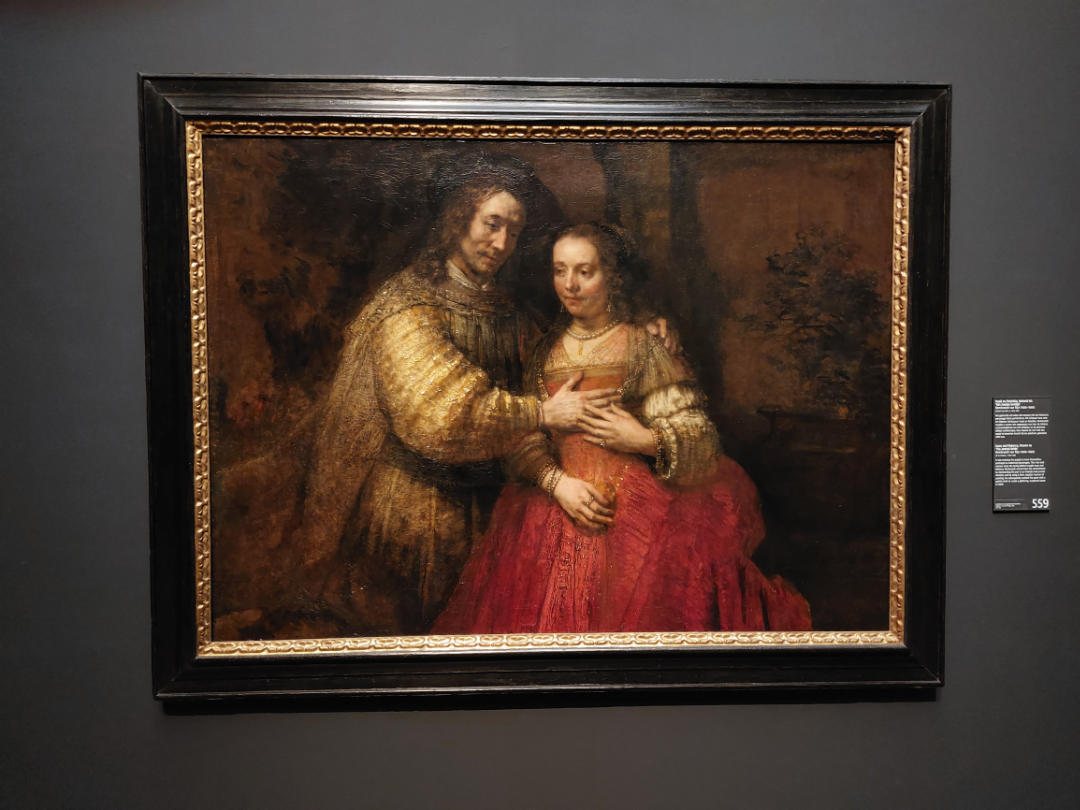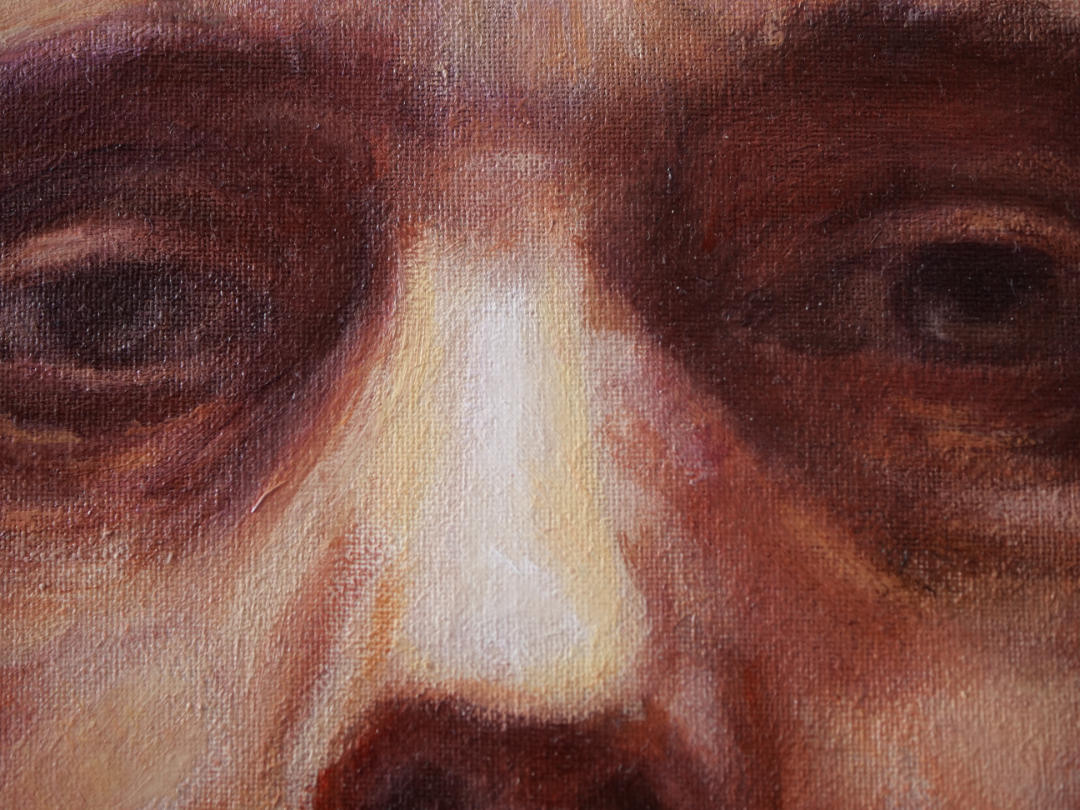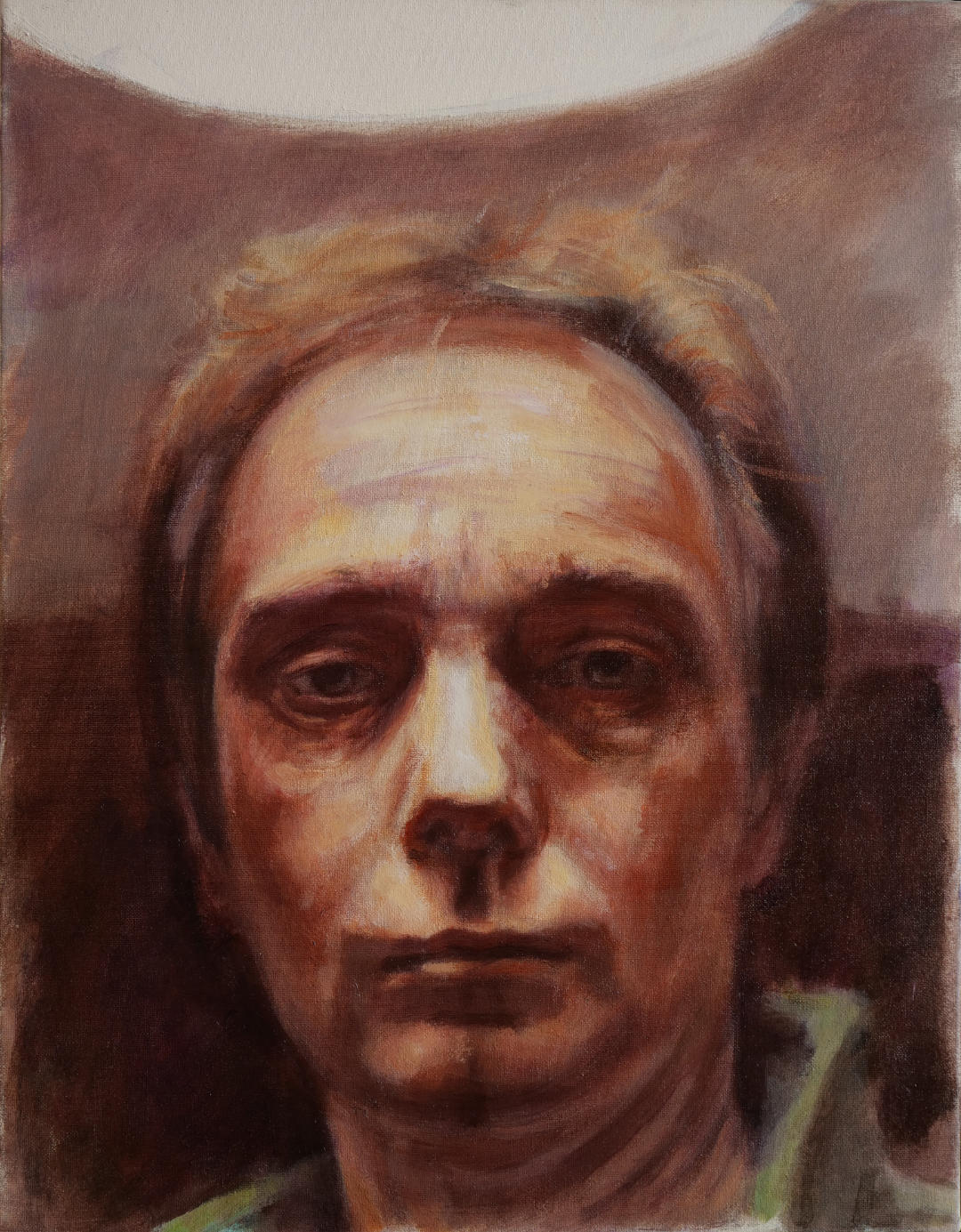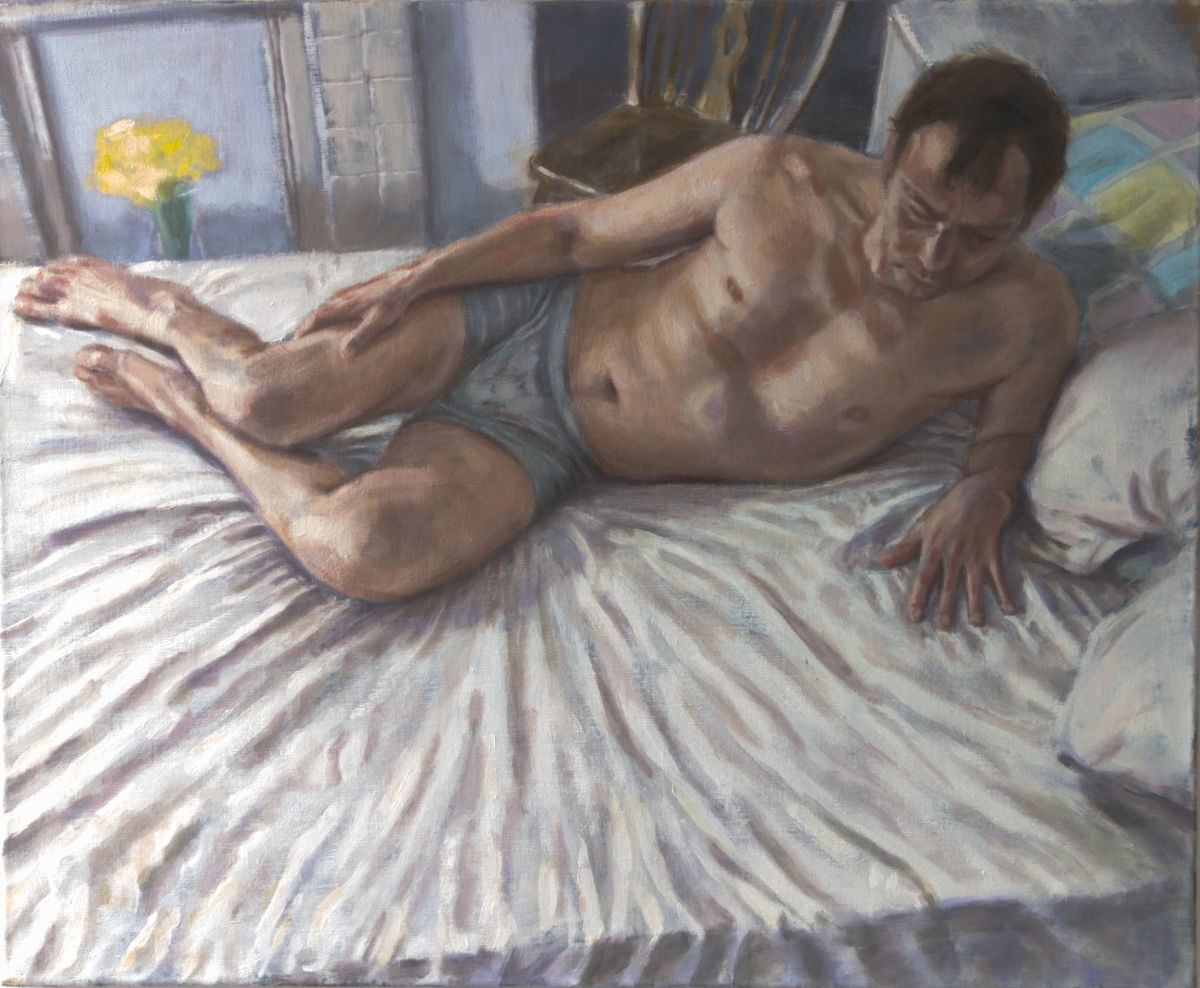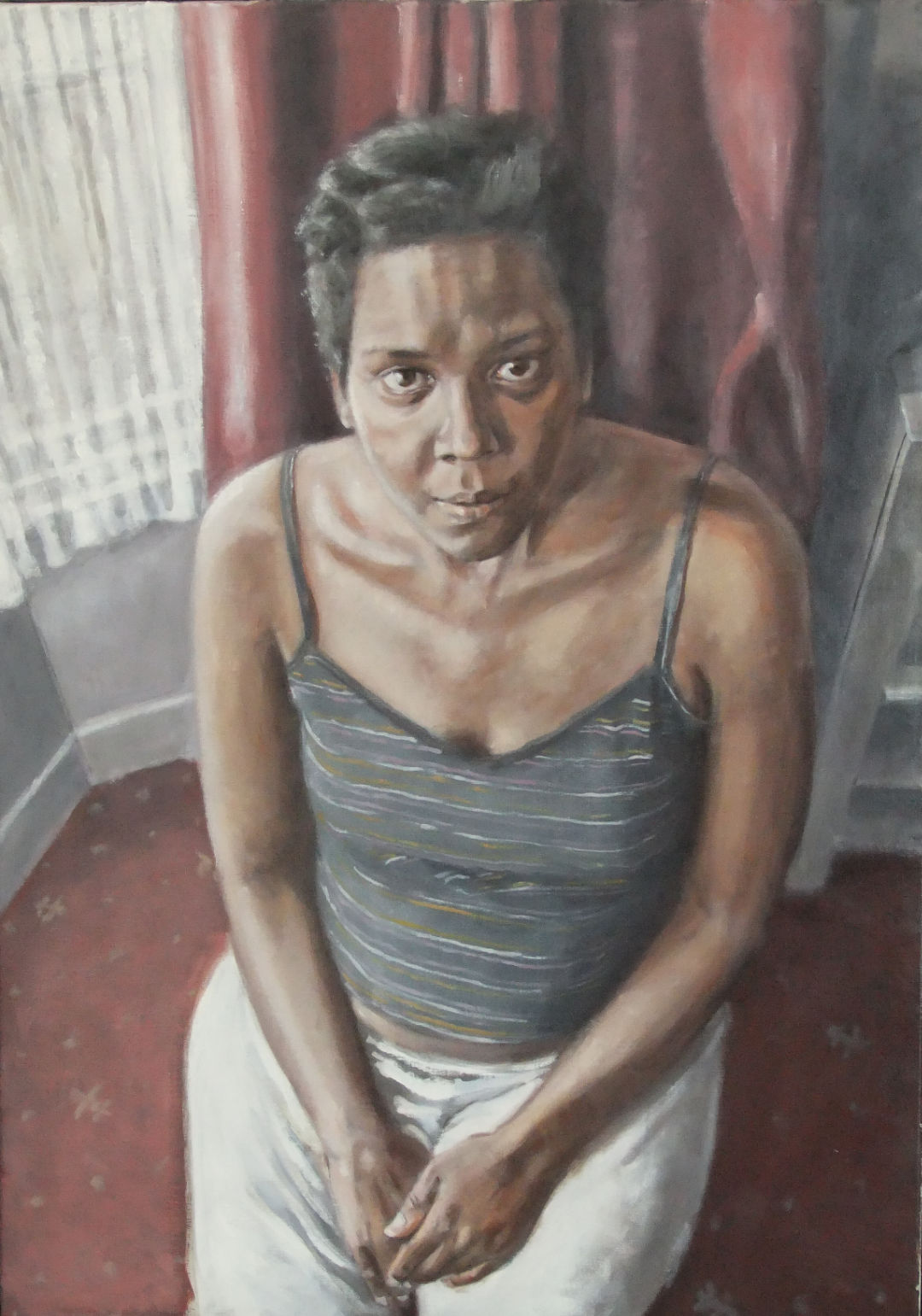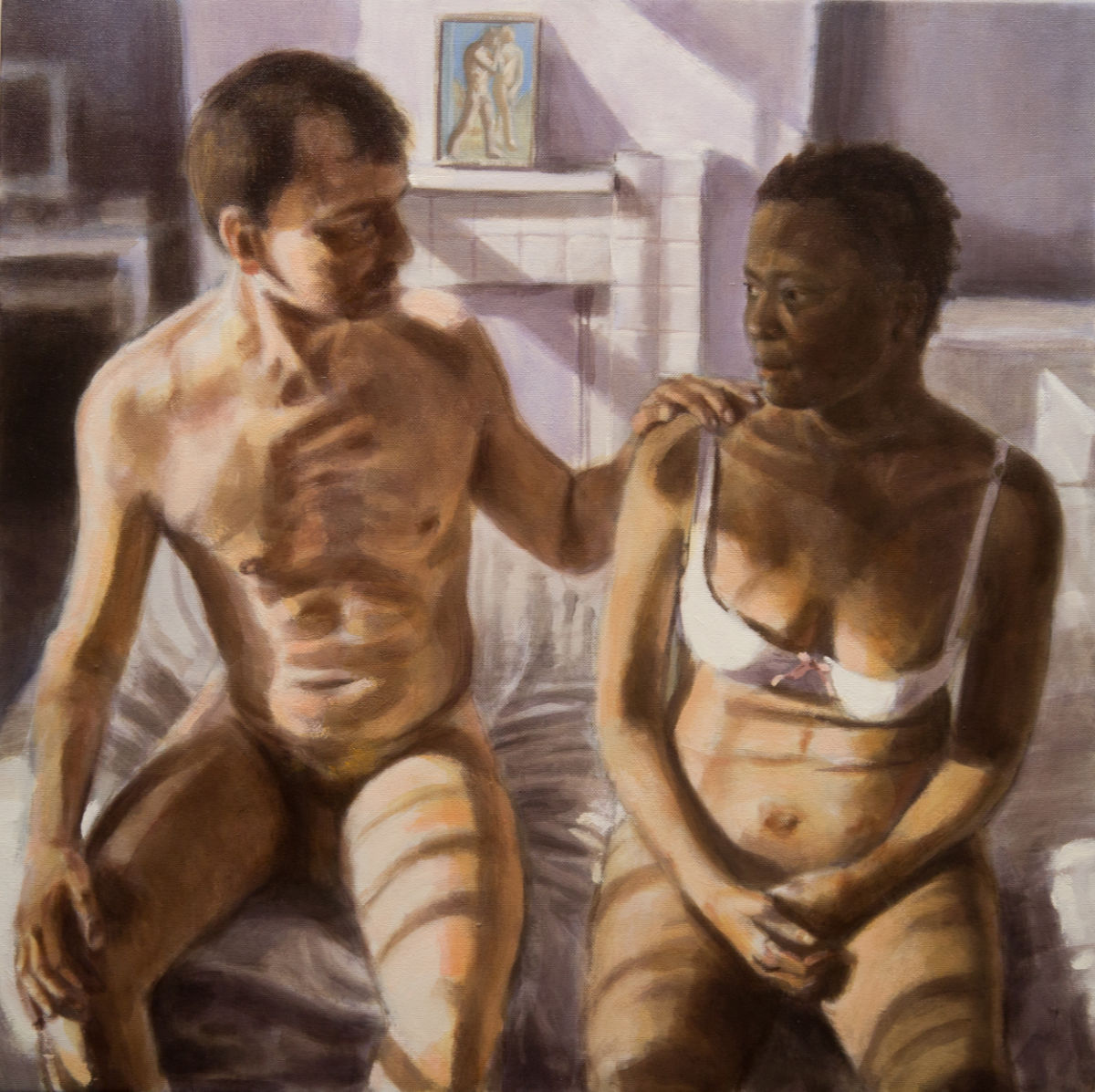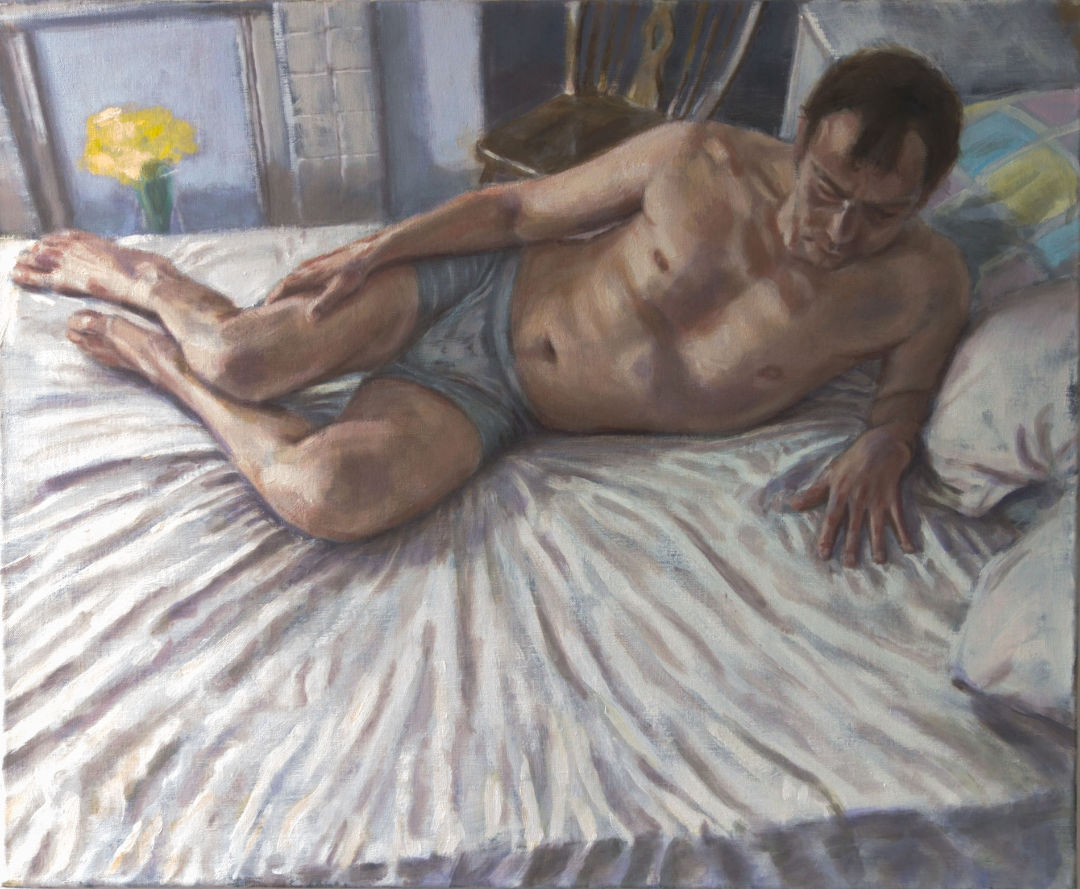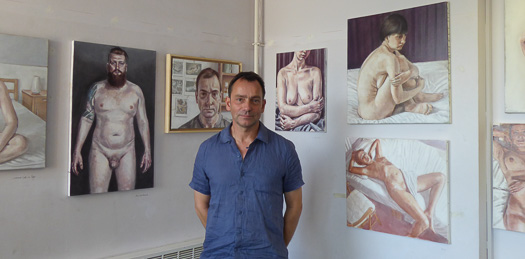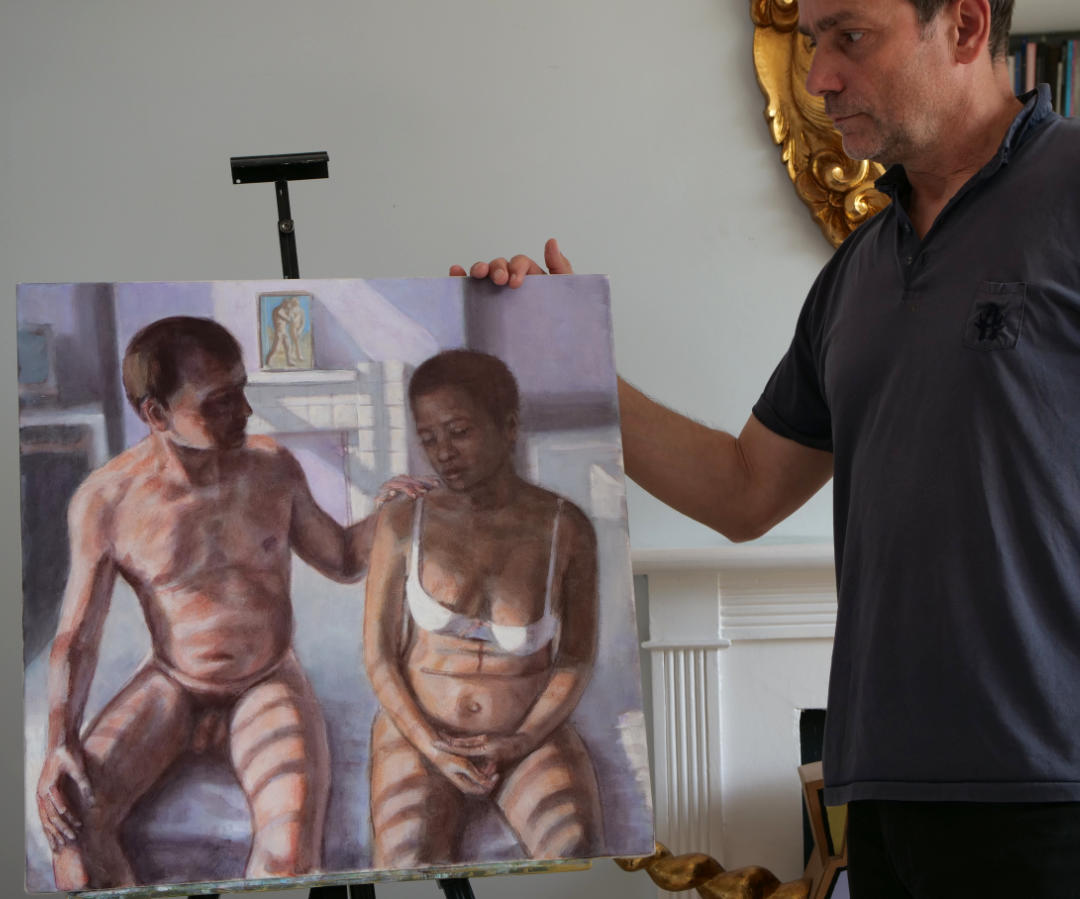
The Painting I Couldn’t Let Go: Revisiting “Man and Woman” a Decade Later
Some paintings are finished the moment the last brushstroke is applied. Others take a little longer. For my painting, “Man and Woman,” it took over a decade of quiet dissatisfaction before I could finally call it complete.
This piece was always deeply personal. It was the last in a series I created to honour my late partner after she passed away from a long illness. I had planned the paintings while she was still with me—taking reference photos, making sketches—but her poor health meant the canvases remained blank. After she was gone, a surge of activity propelled me into the studio to bring them to life, to record our relationship in paint.
Yet, while the other paintings in the series felt resolved, “Man and Woman” never did. For ten years, it troubled me. While it was technically faithful to the photographs I had worked from, it had failed to capture a true likeness of her. Her spirit wasn’t there.
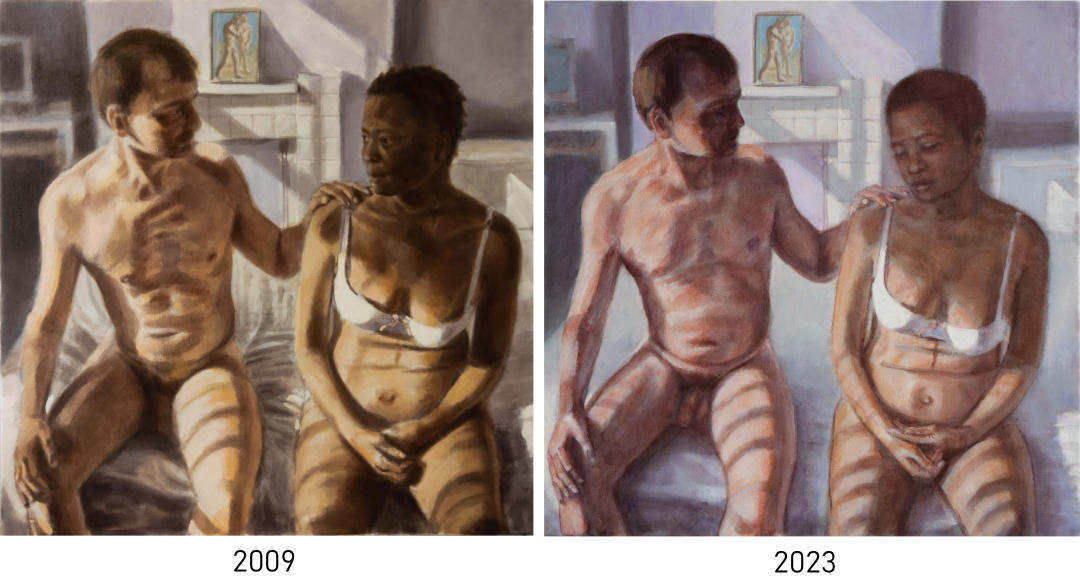
Finally, I decided I had to rework it. What started as a plan for a small amendment quickly became a complete repainting of the entire surface.
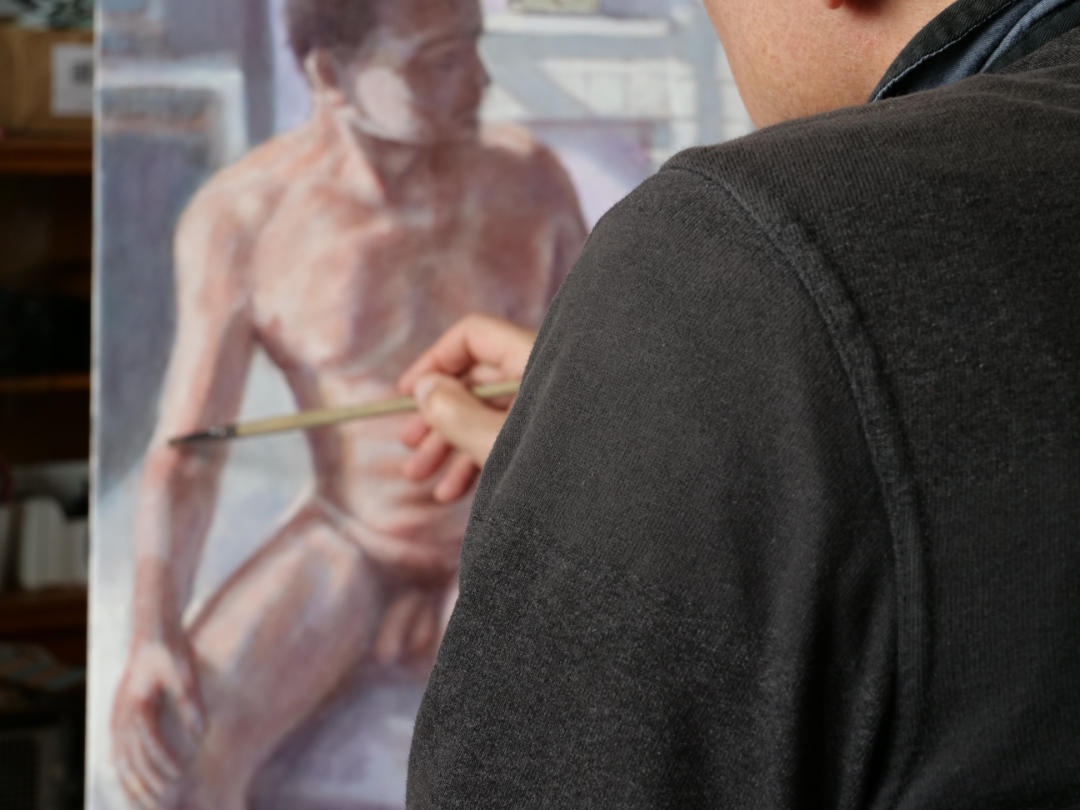
The challenge, of course, is that an artist doesn’t stand still. My technique has evolved significantly since 2009. My palette is brighter, I use different mediums, and my approach to glazes is more restrained. In many ways, I was a different painter confronting an old ghost.
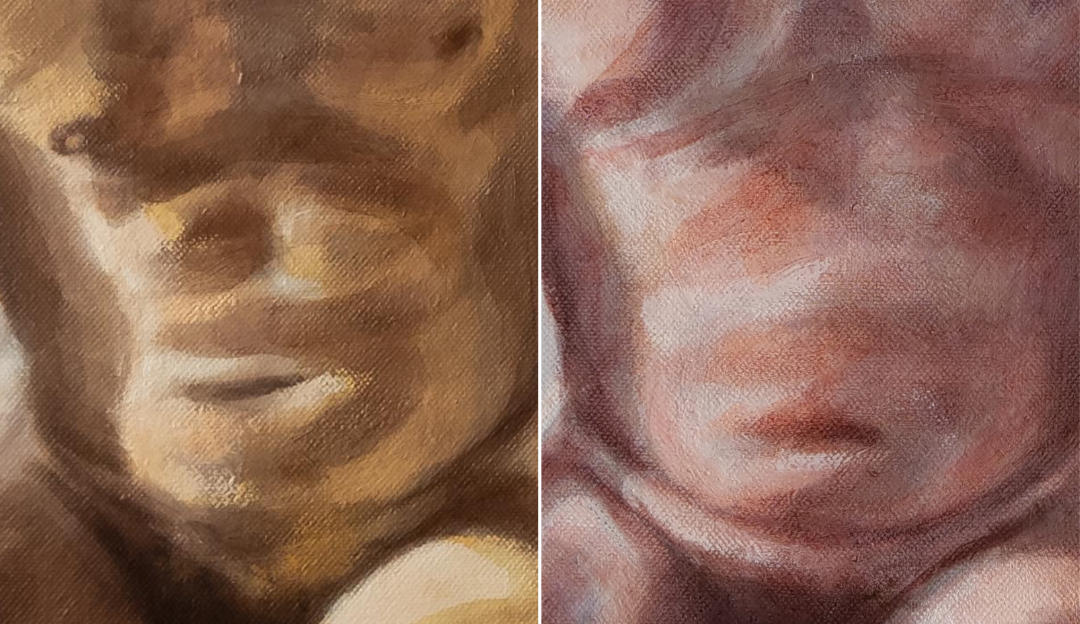
Interestingly, the biggest change came from something I’d lost: the original reference photos. I had to paint my late partner’s face almost entirely from memory. This would have terrified me a decade ago, but my work has grown less beholden to photographic accuracy. I’ve learned to trust my memory and my hand. Paradoxically, by letting go of the exact reference, I believe I found a much truer likeness.
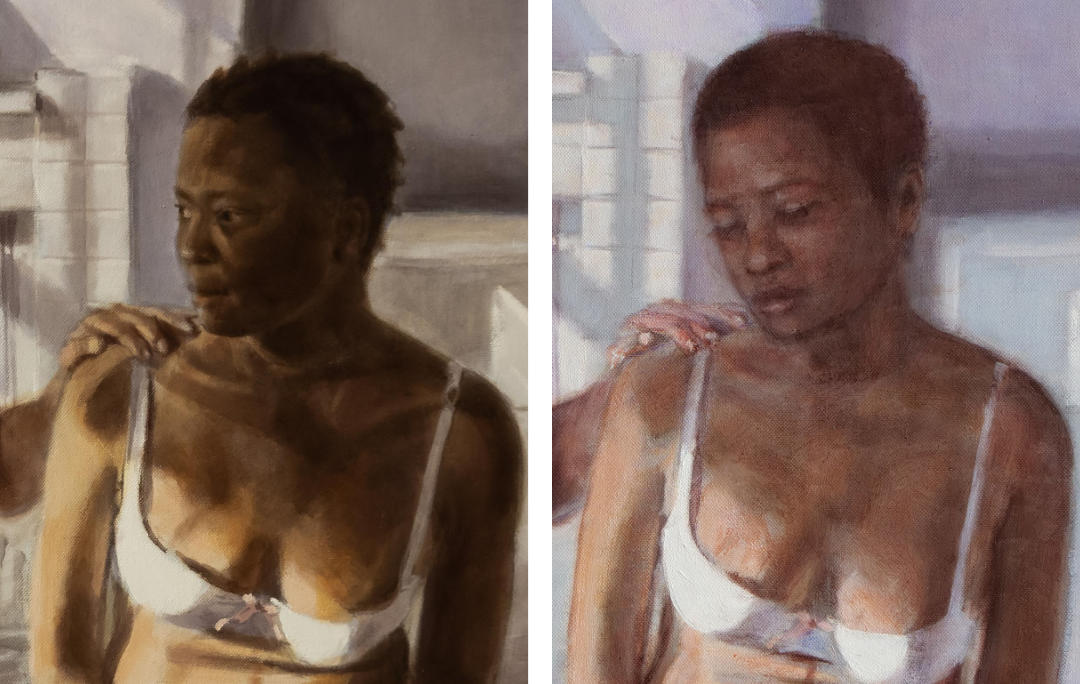
Looking at the two versions side-by-side, the changes might seem subtle to some. But for me, they are monumental. The revision is finally the painting I set out to create in 2009. It was a long road to get here, but it was worth every moment to finally do her memory justice. The nagging doubts are gone, and I feel happy to share it with the world.
Edit: “Man and Woman” has since been shortlisted for the LGC Art Prize 2023
A recent post about the competition can be found here: LGC Art Prize
